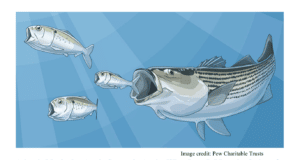The chemistry of acrylic windshields was first discovered in 1843. In 1933, German chemist Otto Rohm refined the chemistry into polymethyl methacrylate (PMMA), patented it and registered the brand name Plexiglas in 1933. In 1936, the product under the name Lucite by DuPont was used in airplane windshields and gun turrets. The question of patent ownership was likely settled on the European battlefield.
Now marketed under nearly a dozen names, PMMA is also used to make boat windshields and canopies for race and performance boats, center-consoles, bass boats and many pontoons. It is shock resistant, flexible and tough, but its Achilles’ heel is its low abrasion resistance. Proper care with soft cleaning cloths and appropriate polish prevents hazing and scratches, but if the worst happens, scratch removers and acrylic restorers can minimize the damage — if it isn’t too deep.
Deep scratches or gouges can be sanded down and polished back up; however, the result is less than acceptable because the polished areas distort the view.








